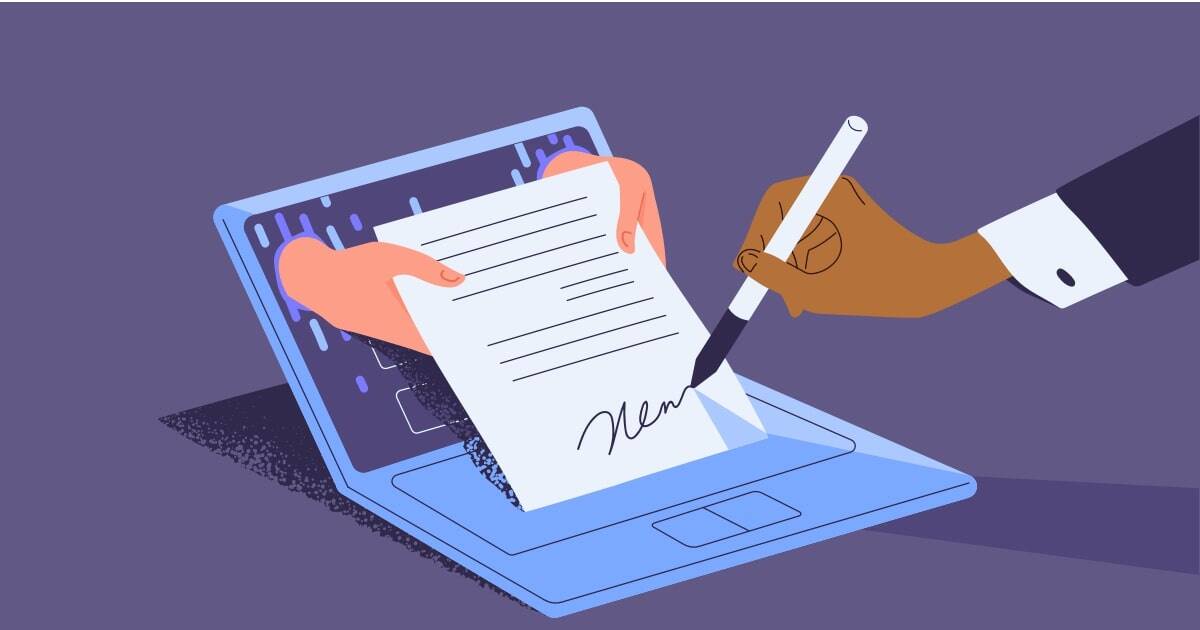There are many ways a contract can get delivered to the vendor risk management team. In best case scenarios, the vendor risk team has been involved in the vendor selection, initial due diligence, contracting and onboarding process. In some cases, the contract is forwarded to the vendor risk management team from an executive or the line of business leader after it’s already been signed. Whichever way, here are your next steps once you see it.
Considerations After the Contract Is Signed
Once you have that signed contract, make sure you do the following:
1. Identify the parties to the contract.
Your organization should be one of those parties; however, who else is included? If it’s not clear, that’s an issue that must be addressed.
2. Determine the spend.
What is your organization obligated to pay the vendor? It’s always prudent to determine the total cost of the contract up front, which means adding up all the money that should be paid to vendor over the life of the contract. If there are penalty clauses in the contract – for your organization or for the vendor – make sure you take those into account.
3. Understand the service level agreements (SLAs).
Determine the service levels the vendor has agreed to provide your organization and what the time frames associated with each are. Make sure you double check with the line of business to make sure they understand the contract’s SLAs.
4. Review timelines.
All contracts have standard timelines. The vendor risk management team needs to make certain these are tracked somewhere in your vendor management platform. Make sure you have notices set up for each of these dates. Set up the notices to allow your organization enough time to make decisions as needed!
Here are some of the dates and information you’ll want to be sure to track:
- Start date – The effective date of the contract.
- End date – Contract termination dates can be very nebulous with auto renewing agreements.
- Termination process – What the defined process for ending the contract looks like. The risk management team needs to record this process for every agreement.
- Notice date – The date your organization will have to send a notice of renewal or non-renewal.
- Individual who will receive the notice – It’s also prudent to record to whom and how the notice will be delivered.
5. Review automatic price escalations.
Price increases normally occur with auto-renewing agreements. Though, some contracts will have an annual cost increase. Either way, you need to know the percentage or dollar amount of the cost increase.
6. Review the terms and conditions.
These are the rules and guidelines that both parties to the agreement must adhere to.
7. Check for warranties and/or indemnifications.
The vendor should warranty their product or service and they should indemnify your organization from any wrongdoing on their part. This is important to review and understand!
8. Understand any stipulations around “governing law”.
If a dispute arises, don’t be surprised to hear this question: “What state or county will have jurisdiction to hear the case?”
With that being said, you’ll also want to consider:
- Dispute resolution – Typically, the second thing you’ll be asked if something doesn’t go to plan is, “What is the dispute resolution process?” It’s a best practice to note the highlights of this process.
9. Review merger clauses.
Any vendor’s merger or acquisition can have a disastrous effect on your organization. Make sure you understand what the vendor’s responsibilities are and what your organization’s responsibilities are if a merger occurs.
10. Consider other important clauses pertinent to the partnership type.
Here are a couple of other clauses you’ll often need to consider:
- Confidentiality – Be sure to understand, document and socialize the confidentiality provisions of every contract — especially the contracts where confidential, nonpublic information will be exchanged between the parties within the agreement.
- Non-Compete and Non-Solicitation – This section is designed to keep your organization from hiring the talent the vendor brings to the table or to keep personnel at your organization from playing fast and loose with the vendor’s business model.
In a third-party risk professional's world, it's possible, and sometimes frequent, where you'll receive a contract that an executive or line of business leader signed without vendor risk management involvement. When this happens, don't panic. You'll just do one more step: ensure all key stakeholders are aware of the product/service.
At the end of the day, it’s the vendor risk management team’s goal to ensure both the organization and the vendor live up to the obligations they’ve contractually committed to. Contracts contain a vast amount of information, so it’s crucial you make sure to capture it all by documenting the clauses and important dates – preferably in a platform. Also, as a best practice and to keep everything running smoothly, make certain your reporting contains the pieces of data your organization needs.
Make sure your vendors stay compliant throughout the duration of your contract. Download the infographic.





.gif?width=1920&name=Sample-Graphic-Animation%20(1).gif)


